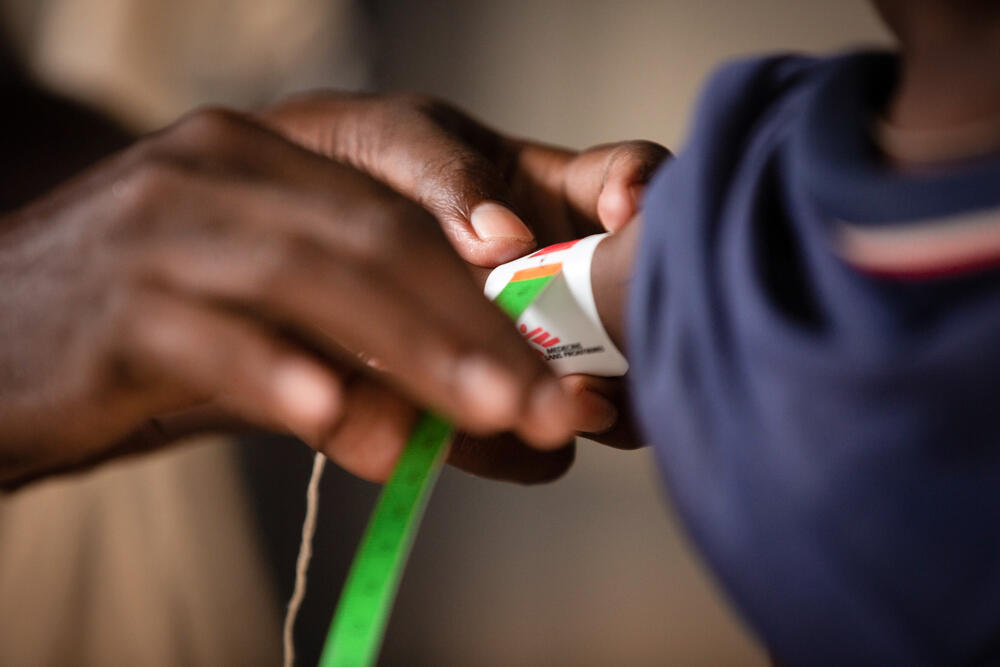Malnutrition: Record number of children hospitalised in Kenyan refugee camp
Hospital admissions of children suffering from severe malnutrition have spiked in Dagahaley, one of three refugee camps in Kenya’s huge Dadaab refugee complex.
This comes as Médecins Sans Frontières / Doctors Without Borders (MSF) say humanitarian conditions in the overcrowded camps are worsening.
In 2022, MSF teams in Dagahaley treated a record 12,007 patients in our paediatric ward and therapeutic feeding centre. This is a 33 percent increase from the previous year.
Behind this alarming surge in hospital admissions, MSF data also shows a gradually increasing trend in the general malnutrition rate among children in Dagahaley. In December 2022, this reached eight percent of all children in the camp – a 45 percent increase from July.
Explained: The Dadaab refugee camps
The Dadaab refugee complex in eastern Kenya is one of the largest refugee settlements in the world.
The area currently hosts over 233,000 registered refugees and 80,000 unregistered. Many people have been living in the camps for over three decades since the civil war in neighbouring Somalia, however, other crises have forced families to flee here.
In 2022 alone, over 50,000 people arrived in Dadaab who are yet to be officially registered as refugees.
MSF has been delivering medical aid in and around Dadaab for most of the camp’s 30-year existence. We provide comprehensive healthcare to both refugees and the host community, including basic and specialist services through two health posts and a hospital.
Life-saving medical care, thanks to your support
The generosity of people like you means expert MSF teams save lives in more than 90 countries worldwide. In conflict zones, natural disasters and epidemics, we go where we are needed greatest.
A complex crisis
Several complex factors are aggravating the humanitarian situation in Dagahaley and stretching the healthcare capacity of the camp.
An ongoing cholera outbreak declared at the end of October 2022 has gripped the refugee camps as well as communities in Garissa and Wajir counties.
A crippling drought and a prolonged conflict have also continued to displace people in the Horn of Africa in search of food and water.
At the same time, an inadequate humanitarian response as a result of scarce funding has added further pressure on the situation. This has deepened the wide gaps in vital areas such as water, sanitation and hygiene, nutrition, health, and protection.
Worryingly, forecasts paint a grim outlook for refugees this year.
The UN humanitarian office, OCHA, has predicted a sixth consecutive failed rainy season from March to May 2023, which will exacerbate the scale and severity of the humanitarian emergency in the Horn of Africa.
Humanitarian organisations are also concerned over expected funding cuts for refugees, which would force them to reduce operations at a time when needs are rising fast.
A call for action
MSF teams, in coordination with the community and humanitarian groups, have stepped up our emergency support beyond comprehensive healthcare in the Dagahaley camp.
We have opened two medical outposts, built 50 latrines, put in place two water tanks and distributed plastic sheeting and floor mats for some 800 newly arrived families living on the outskirts of the camp.
However, despite our efforts to target the most vulnerable refugees living on the fringes of the Dagahaley camp, the current humanitarian crisis in Dadaab urgently requires a wide-scale response to avert further deterioration.
MSF calls on donor organisations to rapidly release financial assistance. This is critical to meeting the surge in life-saving assistance and protection needs.
The UN refugee agency, UNHCR, has also made appeals to donors to mobilise resources for the re-opening of an 80,000-capacity refugee site that closed in 2018. This would reduce congestion in the camps ahead of the approaching dry season when more people are expected to make their way into Dadaab.
Unless the support materialises and urgent action follows, the incoming influx of refugees could tip the crisis beyond the levels that humanitarian organisations can currently manage.
Refugees in Dadaab have already been locked in a 30-year protracted emergency. The immediate priority is to respond to the escalating needs in the camps, but it is equally vital to put in place a sustainable solution for the people living here.
MSF and malnutrition
Around 45 percent of all deaths in young children are linked to malnutrition.
When children suffer from acute malnutrition, their immune systems are so impaired that the risk of death is greatly increased.
The critical age for malnutrition is from six months – when mothers generally start supplementing breast milk with other foods – to 24 months. However, children under five, adolescents, pregnant or breastfeeding women, the elderly and the chronically ill are also vulnerable.

